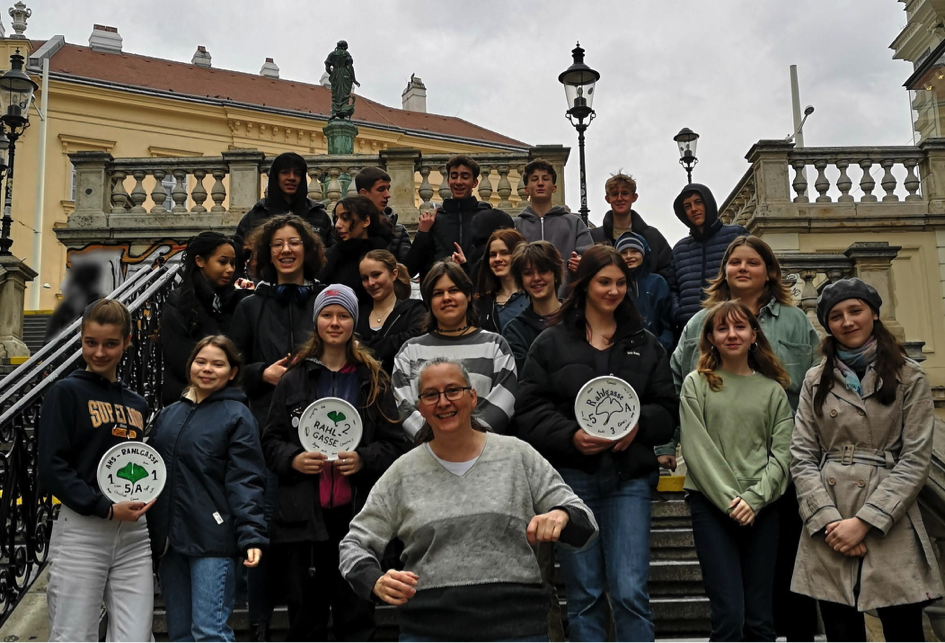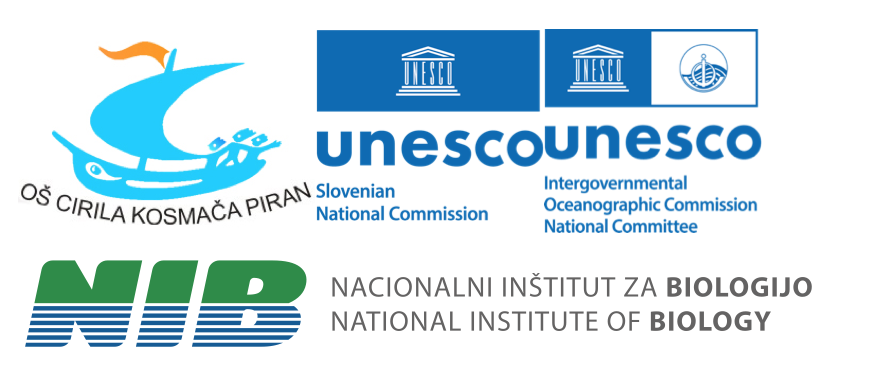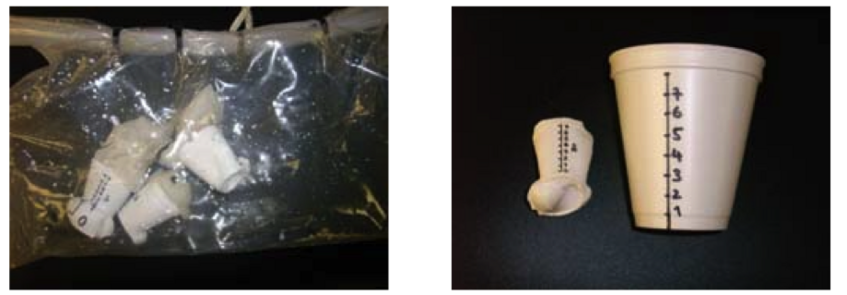Experiments
Science in the deep sea
developed by school children and executed by scientists during a cruise
The purpose of a scientific experiment is to find answers for specific questions. Often an experiment lasts long, is very complicated and expensive. We present you in detail some of the experiments we conducted during previous expeditions and new experiments conducted during this SOI cruise in 2023.

Class 5A (14 – 15 years old students, teacher Ulrike Randl-Gadora), AHS Rahlgasse, Vienna, Austria
Vent animals – Meat Munchers or Leaf Lovers?

Background: The animals living at the deep-sea hydrothermal vents of the volcano of the East Pacific Rise are well known. About 50 species bristle worms (Phylum Annelida, family Polychaeta), snails (Phylum Mollusca, family Gastropoda), a few mussels and clams (Phylum Mollusca, family Bivalvia) and a few crustaceans (Phylum Arthropoda, family Crustacea) are described in Desbruyeres D., Segonzac M., Bright M. 2006. Handbook of Deep-Sea Hydrothermal Vent Fauna. 2nd edition. Denisia 18, Landesmuseum Linz, Austria pp. 554. The diet of the vent animals is based on chemosynthesis. Some animals graze over the surfaces to feed on these chemosynthetic bacteria, other are filter feeder and collect the bacteria from the water. There are a lot of predators feeding on animals or scavengers feeding on dead animals. Others apparently are not picky and feed on dead and alive animals. Because of the lack of light in the deep sea, however, no plants live in the deep sea. Therefore, we expect animals are carnivores rather than vegetarians because this is the food they know. Further we believe that animals will prefer fat and proteins over carbohydrates, simply because animal carbohydrates are rather rare. Since proteins are mainly used as building blocks in metabolism and are only broken down as energy supply when carbohydrates and fat can no longer be metabolized, we assume that animals also prefer fat (even when we humans would rather eat a steak than a piece of pork fat). Ultimately, the closer the food is the faster they will find it, not with their eyes (which are useless in the dark) but by smell.
Hypothesis 1: We hypothesize that vent animals will prefer meat over plants.
Hypothesis 2: We hypothesize that vent animals prefer fats over proteins over carbohydrates.
Hypothesis 3: We hypothesize that vent animals will find food faster the closer it is.
Material and Methods: We use two kitchen oven grids and place on each three animal and three plant products on the grid and secure them with cable ties. On each corner of the oven grid, a 0.5 kg lead weight is mounted. We further use a labelled plastic bucket lid (already prepared in Vienna). The lid is secured with ropes to the gird prior deployment. Kitchen oven grid, lead, rope and buckets lids will be shipped from Vienna to Costa Rica.

Kitchen oven grids and scuba diving lead

Labelled bucket lids
The following food items will be bought in Puntarenas, Costa Rica prior boarding the ship and stored in a refrigerator until the deployment: Animal pig rind (fat), muscle meat (protein), liver (carbohydrate), plant coconut fat or brazil nuts (fat), lentils or beans (protein), potato (carbohydrate).
Prior deployment in the crater of the volcano at 2500 m depth, the two grids with the food will be secured on the platform of the ROV SuBastian. One grid will be deployed in a vent area with a lot of animals, the other one on bare basalt a few meters away. Deployment will be filmed and still pictures will be taken. The plan is to visit this site a few hours after deployment and during the next days. The end of the experiments depends on 1) how fast animal find the food and eat it and 2) how often it will be possible to visit this deployment. At the end the scientists will use the multi-chamber suction sampler on the ROV to collect all animals on each food item separately. In the lab onboard the ship the animals will be fixed in ethanol and shipped back to Vienna for counting of animals and identification of animal species by the students of the 5A class.
Stay tuned

Elementary School Ciril Kosmač Piran (7 – 8 year old students, teachers Vika Kuštrin) Piran, Slovenia in collaboration with Marine Biology Station Piran, National Institute of Biology and their IOC UNESCO activities
Magic Beans in the Deep Sea
In the famous fairy tale magic beans grow into a huge beanstalk reaching to the clouds (Jack and the Beanstalk). Let’s see if our beans do the same at the bottom of the ocean.
Background:
We know that sprouting of bean seeds takes about a week. You either can put them directly in the soil or you can also put them between layers of paper and moist the paper. Then they will sprout but only at warm temperature, therefore seed should not sprout when it is too cold. It takes about a week for beans to sprout.
On March 16, 2011 the ship MS Oliva ran aground on Nightingale Island in the Atlantic Ocean. After all crew members were rescued, the ship broke up a few days later. The cargo was 60.000 tons of soy beans. Lots of oil was spilled into the ocean creating sever environmental damage. Beans were also spilled into the ocean but what happened to them was not further described. Six months later divers found rotten away bean areas in the ship wreck.
It is unknown whether beans can sprout in seawater. We also do not know if they sprout at high pressure in the deep sea.
Hypothesis: Beans will not sprout in cold, deep-sea water but will sprout in warm deep-sea water
Material and Methods: We will put beans between layers of paper and then place them in bags made out of panty hoses. For the deployment with the ROV we will mount a scuba diving lead on this bag with a rope, and to find the bag we will mount a lid of a plastic bucket on a second rope. Two of these bags will be deployed, one in warm vent water and one in a cold area. We will leave the bags in the deep sea for about 10 days. As control we also will put beans between layers of paper – moist them either with seawater or with freshwater and leave them at warm temperature in the lab. Another set we will put in the refrigerator.

Let’s see what happens with the beans in the deep sea and compare them to the beans in the lab.
On board we first repeated the experiments conducted by Elementary School Cirila Kosmača Piran on land. We exposed mixture of beans to freshwater and seawater and incubated them at room temperature or at 4°C in the dark and followed any signs of sprouting daily. We found out that only beans exposed to freshwater sprouted: first the ones at room temperature, but few days later also some from the batch incubated at 4°C. On the other hand, beans exposed to seawater did not show any sign of sprouting. Even more so, beans exposed to seawater at room temperature were covered in mold after 10 days.

(Top left) The four on board bean sprouting treatments (fresh and salt water, cold and room temperature). (Center left) Room temperature fresh water beans sprouted. (Center right) Room temperature salt water beans did not sprout, and grew some fungi. (Top right) Cold temperature salt water beans did not sprout either.
Next, we wrapped two batches of beans in two different bags with pores that allowed for water exchange and prepared them for the dive with ROV SuBastian from the Schmidt Ocean Institute.

(Top left) We use a mesh to wrap the beans. (Center left) They got wrapped in a bag. (Center right) Bean bag deployed in the deep ocean. (Top right) Bean bags back on board after recovery
They dived all the way through the water column, down to 2500 m depth, where we placed one bag in the vicinity of hydrothermal vent and the other away from it.

(Left) School experiments in the deep sea. (Center) SuBastian deploying the bag of beans. (Right) Bag of beans and the weight attached to it
We followed what was happening for the next 7 days. In fact, animals at the sea floor did not really care about the beans, so we brought them back to surface afterwards and repeated the experiment in the laboratory. We again exposed beans to freshwater and seawater and kept them at room temperature or at 4°C in the dark and followed any signs of sprouting daily. What happened? Again, unfortunately our beans did not like to journey so much as none of them showed any signs of sprouting. So, either beans were not magical or seawater and high pressure are not good conditions to cultivate your beans.

(Left) Beans from the depth. (Center) Once we opened the bag of beans. (Right) Salvador Espada and Tinkara Tinta

Elementary School Barbaraschool (10 – 11-year-old students, teacher Isabel Spruijt) Bunnik, Netherlands in collaboration with the Royal Netherlands Institute for Marine Research (NIOZ)
Part I: Under pressure!
Background:
Our bodies are adapted to the atmospheric pressure on Earth which is one 1 bar at sea level. You may have experienced a change of this pressure when you are sitting in an airplane and feel a “plop” in your ears as the pressure of the air on your inner year decreases when you ascend. When you jump into a swimming pool and dive to the bottom of the pool, the pressure increases with water depth and you can also feel this as your ears might start hurting as the water pushes against your inner ear.
In the sea, the pressure increases with 1 bar every 10 meters, which is a lot, as the water is much heavier than the air. Animals that live in the deep sea are adapted to this enormous pressure. When we perform our scientific experiments in the deep sea with submersibles or robots, the materials need to be strong enough to resist the pressure of the water. But how strong are the materials? What happens with “daily life” materials when they are exposed to the depths of our ocean?
Hypothesis: Materials that are filled with air are destroyed as the water pressure compacts them. Materials that are solid stay intact because they are not compressed by the water pressure.
Material and Methods: We thought about daily life materials where we want to know what happens with them under water pressure. The materials we want to test are: an air-filled balloon, a ping-pong ball, a raw egg, a cooked egg, pasta, eatable gummybears and marshmallows.
We want to mount these materials on the ROV platform and film it with the camera of the ROV while it is descending to 2500 meters water depth. Let’s see what happens!
Part II: Chef cook in the deep sea
Background: The fluids of the hydrothermal vents can reach really high temperatures, especially at the black smokers, where temperatures of above 300 degree Celsius can be measured.
Hypothesis: You can cook an egg or pasta or marshmallow in the hot vent fluids.
Material and Methods: In the first experiment we want to find out if an uncooked egg, marshmallows and pasta can resist the great pressure. If yes, we place the food into a steel-mesh that is mounted on a steel handle. The ROV-manipulator is then holding the steel-handle with the attached steel-mesh that is filled with the food for 10 minutes into hot vent fluids. Back on board of the ship, we will open the egg and taste the marshmallow and pasta if it they are well cooked. Enjoy!

Yeast Sees the Deep Sea (from a previous cruise)
Background: We know yeast because we use it to bake bread, to brew beer and to make wine and all this for already a few thousand years. However, that yeasts are living organisms was firstly described by Louis Pasteur (1822-1895) in his book “Études sur la bière“ (Studies about the beer). Yeasts are unicellular fungi, which grow to a size of 10 micrometer (a tenth part of a millimeter). Yeasts are heterotrophic that means they eat organic material (sugar, protein, fat) which is produced by other creatures. They use oxygen to break down sugar into water and carbon dioxide and they utilize the released energy for their metabolism. If there is no oxygen around, yeasts can live at least for some time and with less cell division. Then, the yeasts turn the sugar into the less energy rich ethyl alcohol (instead of water) and carbon dioxide. This is called fermentation. We utilize the carbon dioxide for example to let bread dough rise or to aerate beverage. The yeast itself provides us with vitamin B. Yeast extracts are used as flavor enhancer in food. In biotechnology sterile yeast extracts are used as culture media for other types of fungi or bacteria. Yeasts either reproduces by budding and cell division (asexual) or they produce spores (sexual).
Hypothesis: We hypothesized that yeast will survive in the deep sea, at least for some hours.
Material and Methods: We put bread dough containing living yeast into a container and mounted it outside of the submersible. The dive lasted 8 hours, the yeast was in a depth of 2500 meters for 5 hours. After the dive the ship’s cook made bread out the dough to see whether bread can be made of this dough indicating the yeast was surviving the pressure and cold conditions in the deep sea.

Yeast dough in open white container put into a blue plastic net and mounted to the outside of Alvin. After the dive we saw that the dough has increased in size a lot. Photographs: Bright lab.
Results: The cook took the dough that we recovered and immediately added flour to make bread. All of us tasted it and we found that it is not as airy and fluffily and as normal bread but it tasted like bread.

The ship’s cook made bread out the dough. Photographs: Bright lab
Conclusion: Yeast does not die because of the high pressure or darkness or low temperatures. At least not within 5 hours. Furthermore, the salty seawater does not harm the yeast.
We learned that plastic bags are not suitable as wrapping in the deep-sea, because they break. Moreover, the dough rose during the journey to the deep. Probably even several times and this is always bad for dough as the cook told us. The dough was relatively small when we took it out of the fridge. The outside temperature was already 25°C in the early morning. The water temperature at the surface was 28°C. This temperature continually decreases with increasing depth, but the yeast had enough time to become active when the bag was fixed to Alvin, during the descent and ascent of the submersible and during the recovery at the end of the dive.
The Styrofoam Experiment (from a previous cruise)
Background: Styrofoam is a synthetic material, brought onto the market by the German company BASF as early as 1951. The base materials are small pearls of Polystyrol, which is obtained from crude oil in a very complicated procedure. The pearls gets foamed with the aid of foaming agent and heat and gets turned into small pellets. These pellets can be forced out into almost any shape with heat and pressure. The complete Styrofoam comprises 98% air. It is very suitable as packing and insulation material. many items of daily life are made out of Styrofoam. For example, decorations and party cups.
Hypothesis: We hypothesized that Styrofoam cups change under pressure.
Material and Methods: To find out what happens with Styrofoam cups under pressure we took some of these cups with us into the depth. To keep their shapes, we stuff them tightly with paper towels. The submersible pilot fixed one of the cups on Alvin’s basket and aimed one camera at it, before the dive.
Results and Conclusion: The Styrofoam cups got considerably smaller under high pressure. This happened because the air got compressed when under pressure during the descent of the submersible. Note that liquids and solids do not get compressed with pressure, while gases react differently.

1. Cups after the after dive. 2. Comparison after and before dive. Photographs: Bright lab.
